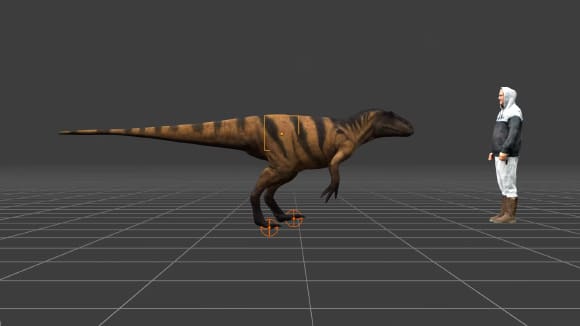Long dinosaur trackways provide valuable records of trackmaker behavior, yet their study is often hindered by logistical challenges in documentation and analysis. In a new study, paleontologists from the University of Queensland and the China University of Geosciences addressed these limitations by employing digital methodologies to re-analyze a 70-m-long theropod dinosaur trackway in China.
The 120-million-year-old dinosaur trackway studied by the team is located southwest of Hanxi Village in Sichuan province, China.
Known locally as ‘Shifengwo’ or ‘the stone phoenix nests,’ this trackway has deep cultural significance, with tracks once imagined by villagers to have been left by a phoenix, as mentioned in a local poem from the Late Qing Dynasty (1840-1911 CE).
The trackway itself represents the longest theropod trackway in East Asia, comprising 81 successive footprints and spanning nearly 70 m.
“For the first time this dinosaur’s movements have been reconstructed step by step, revealing how it walked, changed pace and responded to its environment,” said University of Queensland paleontologist Anthony Romilio.
“This sequence of 80 consecutive footprints extends for 70 m in Sichuan province, China and is a fleeting moment frozen in stone.”
“Through digital animation, we can observe that moment as it unfolded, getting unprecedented insights into the animal’s behavior and biomechanics.”

Life reconstruction of the trackmaker based on Yutyrannus and shown to scale with a 175-cm-tall human model. Image credit: Anthony Romilio & Lida Xing, doi: 10.3390/geosciences15050165.
Using trackway measurements, Dr. Romilio and his colleague, Dr. Lida Xing, revealed the dinosaur walked on two legs, stood 1.13 m tall at the hip and weighed up to 292 kg.
“The footprints show this dinosaur moved at a steady 5.3 km/h which is equivalent to a brisk human walk and then briefly accelerated into a light trot before returning to its regular pace,” Dr. Romilio said.
“This wasn’t just a dinosaur wandering aimlessly, it was moving with purpose in a nearly perfectly straight line.”
According to the team, the trackmaker was similar in size to the feathered dinosaur Yutyrannus which lived in northeastern China in the Early Cretaceous epoch.
“Trackways can reveal behavioral information and stories that fossilized bones alone cannot provide,” Dr. Romilio said.
“But long trackways such as this have historically been understudied due to the logistical difficulties of measuring them in detail in the field.”
“Our entirely digital approach allows us to capture, interpret and preserve all the measurements and calculations of fossil track sites on computer to provide a glimpse into the dynamic life of an ancient creature.”
The team’s findings appear in the journal Geosciences.
_____
Anthony Romilio & Lida Xing. 2025. A Digital Analysis of the ‘Phoenix Trackway’ at the Hanxi Cretaceous Dinosaur Tracksite, China. Geosciences 15 (5): 165; doi: 10.3390/geosciences15050165


